Greene W.H. Econometric Analysis
Подождите немного. Документ загружается.


APPENDIX C
✦
Estimation and Inference
1059
The likelihood function is the cornerstone for most of our theory of parameter estimation. An
important result for efficient estimation is the following.
THEOREM C.2
Cram
´
er–Rao Lower Bound
Assuming that the density of x satisfies certain regularity conditions, the variance of an
unbiased estimator of a parameter θ will always be at least as large as
[I(θ )]
−1
=
−E
∂
2
ln L(θ)
∂θ
2
−1
=
E
∂ ln L(θ)
∂θ
2
−1
. (C-12)
The quantity I(θ) is the information number for the sample. We will prove the result that the
negative of the expected second derivative equals the expected square of the first derivative in
Chapter 14. Proof of the main result of the theorem is quite involved. See, for example,
Stuart and Ord (1989).
The regularity conditions are technical in nature. (See Section 14.4.1.) Loosely, they are
conditions imposed on the density of the random variable that appears in the likelihood function;
these conditions will ensure that the Lindeberg–Levy central limit theorem will apply to moments
of the sample of observations on the random vector y = ∂ ln f (x
i
|θ)/∂θ, i = 1,...,n. Among
the conditions are finite moments of x up to order 3. An additional condition normally included
in the set is that the range of the random variable be independent of the parameters.
In some cases, the second derivative of the log likelihood is a constant, so the Cram ´er–
Rao bound is simple to obtain. For instance, in sampling from an exponential distribution, from
Example C.6,
ln L = n ln θ − θ
n
i=1
x
i
,
∂ ln L
∂θ
=
n
θ
−
n
i=1
x
i
,
so ∂
2
ln L/∂θ
2
=−n/θ
2
and the variance bound is [I(θ)]
−1
= θ
2
/n. In many situations, the second
derivative is a random variable with a distribution of its own. The following examples show two
such cases.
Example C.7 Variance Bound for the Poisson Distribution
For the Poisson distribution,
f ( x) =
e
−θ
θ
x
x!
,
ln L =−nθ +
n
i =1
x
i
ln θ −
n
i =1
ln( x
i
!),
∂ ln L
∂θ
=−n +
n
i =1
x
i
θ
,
∂
2
ln L
∂θ
2
=
−
n
i =1
x
i
θ
2
.
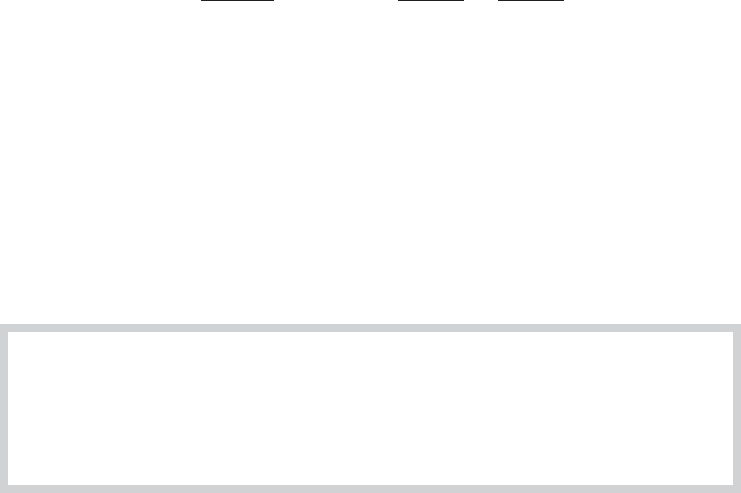
1060
PART VI
✦
Appendices
The sum of n identical Poisson variables has a Poisson distribution with parameter equal
to n times the parameter of the individual variables. Therefore, the actual distribution of the
first derivative will be that of a linear function of a Poisson distributed variable. Because
E[
n
i =1
x
i
] = nE [x
i
] = nθ, the variance bound for the Poisson distribution is [I (θ )]
−1
= θ/n.
(Note also that the same result implies that E [∂ ln L/∂θ ] = 0, which is a result we will use in
Chapter 14. The same result holds for the exponential distribution.)
Consider, finally, a multivariate case. If θ is a vector of parameters, then I(θ) is the information
matrix. The Cram ´er–Rao theorem states that the difference between the covariance matrix of
any unbiased estimator and the inverse of the information matrix,
[I(θ)]
−1
=
−E
∂
2
ln L(θ)
∂θ ∂θ
−1
=
E
∂ ln L(θ)
∂θ
∂ ln L(θ)
∂θ
−1
, (C-13)
will be a nonnegative definite matrix.
In many settings, numerous estimators are available for the parameters of a distribution.
The usefulness of the Cram´er–Rao bound is that if one of these is known to attain the variance
bound, then there is no need to consider any other to seek a more efficient estimator. Regarding
the use of the variance bound, we emphasize that if an unbiased estimator attains it, then that
estimator is efficient. If a given estimator does not attain the variance bound, however, then we
do not know, except in a few special cases, whether this estimator is efficient or not. It may be
that no unbiased estimator can attain the Cram´er–Rao bound, which can leave the question of
whether a given unbiased estimator is efficient or not unanswered.
We note, finally, that in some cases we further restrict the set of estimators to linear functions
of the data.
DEFINITION C.5
Minimum Variance Linear Unbiased
Estimator (MVLUE)
An estimator is the minimum variance linear unbiased estimator or best linear unbiased
estimator (BLUE) if it is a linear function of the data and has minimum variance among
linear unbiased estimators.
In a few instances, such as the normal mean, there will be an efficient linear unbiased estima-
tor; ¯x is efficient among all unbiased estimators, both linear and nonlinear. In other cases, such
as the normal variance, there is no linear unbiased estimator. This criterion is useful because we
can sometimes find an MVLUE without having to specify the distribution at all. Thus, by limiting
ourselves to a somewhat restricted class of estimators, we free ourselves from having to assume
a particular distribution.
C.6 INTERVAL ESTIMATION
Regardless of the properties of an estimator, the estimate obtained will vary from sample to
sample, and there is some probability that it will be quite erroneous. A point estimate will not
provide any information on the likely range of error. The logic behind an interval estimate is
that we use the sample data to construct an interval, [lower (X), upper (X)], such that we can
expect this interval to contain the true parameter in some specified proportion of samples, or

APPENDIX C
✦
Estimation and Inference
1061
equivalently, with some desired level of confidence. Clearly, the wider the interval, the more
confident we can be that it will, in any given sample, contain the parameter being estimated.
The theory of interval estimation is based on a pivotal quantity, which is a function of both the
parameter and a point estimate that has a known distribution. Consider the following examples.
Example C.8 Confidence Intervals for the Normal Mean
In sampling from a normal distribution with mean μ and standard deviation σ ,
z =
√
n(¯x − μ)
s
∼ t[n − 1],
and
c =
(n − 1) s
2
σ
2
∼ χ
2
[n − 1].
Given the pivotal quantity, we can make probability statements about events involving the
parameter and the estimate. Let p( g, θ ) be the constructed random variable, for example, z
or c. Given a prespecified confidence level, 1 − α, we can state that
Prob(lower ≤ p( g, θ) ≤ upper) = 1 − α, (C-14)
where lower and upper are obtained from the appropriate table. This statement is then ma-
nipulated to make equivalent statements about the endpoints of the intervals. For example,
the following statements are equivalent:
Prob
−z ≤
√
n(¯x − μ)
s
≤ z
= 1 − α,
Prob
¯x −
zs
√
n
≤ μ ≤ ¯x +
zs
√
n
= 1 − α.
The second of these is a statement about the interval, not the parameter; that is, it is the
interval that is random, not the parameter. We attach a probability, or 100( 1 − α) percent
confidence level, to the interval itself; in repeated sampling, an interval constructed in this
fashion will contain the true parameter 100(1 − α) percent of the time.
In general, the interval constructed by this method will be of the form
lower(X) =
ˆ
θ − e
1
,
upper(X) =
ˆ
θ + e
2
,
where X is the sample data, e
1
and e
2
are sampling errors, and
ˆ
θ is a point estimate of θ. It is clear
from the preceding example that if the sampling distribution of the pivotal quantity is either t or
standard normal, which will be true in the vast majority of cases we encounter in practice, then
the confidence interval will be
ˆ
θ ± C
1−α/2
[se(
ˆ
θ)], (C-15)
where se(.) is the (known or estimated) standard error of the parameter estimate and C
1−α/2
is
the value from the t or standard normal distribution that is exceeded with probability 1 − α/2.
The usual values for α are 0.10, 0.05, or 0.01. The theory does not prescribe exactly how to
choose the endpoints for the confidence interval. An obvious criterion is to minimize the width
of the interval. If the sampling distribution is symmetric, then the symmetric interval is the
best one. If the sampling distribution is not symmetric, however, then this procedure will not be
optimal.

1062
PART VI
✦
Appendices
Example C.9 Estimated Confidence Intervals for a Normal Mean
and Variance
In a sample of 25, ¯x = 1.63 and s = 0.51. Construct a 95 percent confidence interval for μ.
Assuming that the sample of 25 is from a normal distribution,
Prob
−2.064 ≤
5( ¯x − μ)
s
≤ 2.064
= 0.95,
where 2.064 is the critical value from a t distribution with 24 degrees of freedom. Thus, the
confidence interval is 1.63 ± [2.064( 0.51)/5] or [1.4195, 1.8405].
Remark: Had the parent distribution not been specified, it would have been natural to use the
standard normal distribution instead, perhaps relying on the central limit theorem. But a sam-
ple size of 25 is small enough that the more conservative t distribution might still be preferable.
The chi-squared distribution is used to construct a confidence interval for the variance
of a normal distribution. Using the data from Example C.9, we find that the usual procedure
would use
Prob
12.4 ≤
24s
2
σ
2
≤ 39.4
= 0.95,
where 12.4 and 39.4 are the 0.025 and 0.975 cutoff points from the chi-squared (24) distribu-
tion. This procedure leads to the 95 percent confidence interval [0.1581, 0.5032]. By making
use of the asymmetry of the distribution, a narrower interval can be constructed. Allocating
4 percent to the left-hand tail and 1 percent to the right instead of 2.5 percent to each, the two
cutoff points are 13.4 and 42.9, and the resulting 95 percent confidence interval is [0.1455,
0.4659].
Finally, the confidence interval can be manipulated to obtain a confidence interval for
a function of a parameter. For example, based on the preceding, a 95 percent confidence
interval for σ would be [
√
0.1581,
√
0.5032] = [0.3976, 0.7094].
C.7 HYPOTHESIS TESTING
The second major group of statistical inference procedures is hypothesis tests. The classical testing
procedures are based on constructing a statistic from a random sample that will enable the
analyst to decide, with reasonable confidence, whether or not the data in the sample would
have been generated by a hypothesized population. The formal procedure involves a statement
of the hypothesis, usually in terms of a “null” or maintained hypothesis and an “alternative,”
conventionally denoted H
0
and H
1
, respectively. The procedure itself is a rule, stated in terms
of the data, that dictates whether the null hypothesis should be rejected or not. For example,
the hypothesis might state a parameter is equal to a specified value. The decision rule might
state that the hypothesis should be rejected if a sample estimate of that parameter is too far
away from that value (where “far” remains to be defined). The classical, or Neyman–Pearson,
methodology involves partitioning the sample space into two regions. If the observed data (i.e.,
the test statistic) fall in the rejection region (sometimes called the critical region), then the null
hypothesis is rejected; if they fall in the acceptance region, then it is not.
C.7.1 CLASSICAL TESTING PROCEDURES
Since the sample is random, the test statistic, however defined, is also random. The same test
procedure can lead to different conclusions in different samples. As such, there are two ways
such a procedure can be in error:
1. Type I error. The procedure may lead to rejection of the null hypothesis when it is true.
2. Type II error. The procedure may fail to reject the null hypothesis when it is false.
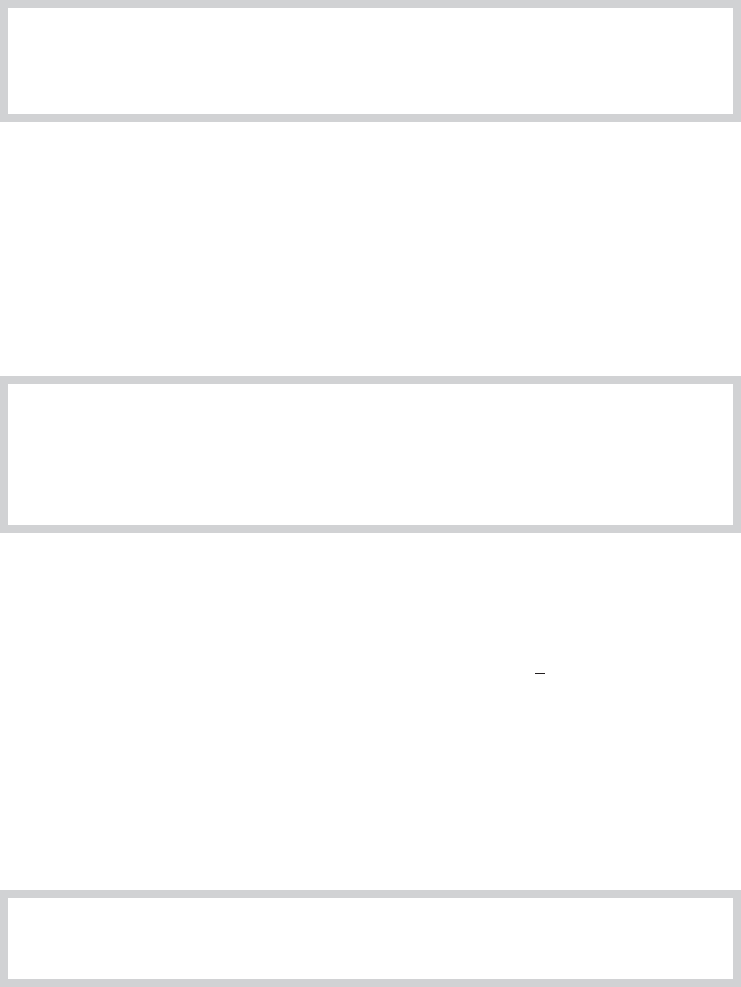
APPENDIX C
✦
Estimation and Inference
1063
To continue the previous example, there is some probability that the estimate of the parameter
will be quite far from the hypothesized value, even if the hypothesis is true. This outcome might
cause a type I error.
DEFINITION C.6
Size of a Test
The probability of a type I error is the size of the test. This is conventionally denoted α and
is also called the significance level.
The size of the test is under the control of the analyst. It can be changed just by changing
the decision rule. Indeed, the type I error could be eliminated altogether just by making the
rejection region very small, but this would come at a cost. By eliminating the probability of a
type I error—that is, by making it unlikely that the hypothesis is rejected—we must increase the
probability of a type II error. Ideally, we would like both probabilities to be as small as possible.
It is clear, however, that there is a tradeoff between the two. The best we can hope for is that for
a given probability of type I error, the procedure we choose will have as small a probability of
type II error as possible.
DEFINITION C.7
PowerofaTest
The power of a test is the probability that it will correctly lead to rejection of a false null
hypothesis:
power = 1 −β = 1 −Prob(type II error). (C-16)
For a given significance level α, we would like β to be as small as possible. Because β is
defined in terms of the alternative hypothesis, it depends on the value of the parameter.
Example C.10 Testing a Hypothesis About a Mean
For testing H
0
: μ = μ
0
in a normal distribution with known variance σ
2
, the decision rule is
to reject the hypothesis if the absolute value of the z statistic,
√
n(¯x − μ
0
)/σ, exceeds the
predetermined critical value. For a test at the 5 percent significance level, we set the critical
value at 1.96. The power of the test, therefore, is the probability that the absolute value of
the test statistic will exceed 1.96 given that the true value of μ is, in fact, not μ
0
. This value
depends on the alternative value of μ, as shown in Figure C.6. Notice that for this test the
power is equal to the size at the point where μ equals μ
0
. As might be expected, the test
becomes more powerful the farther the true mean is from the hypothesized value.
Testing procedures, like estimators, can be compared using a number of criteria.
DEFINITION C.8
Most Powerful Test
A test is most powerful if it has greater power than any other test of the same size.

1064
PART VI
✦
Appendices
1.0
0
1 
␣
0
FIGURE C.6
Power Function for a Test.
This requirement is very strong. Because the power depends on the alternative hypothesis, we
might require that the test be uniformly most powerful (UMP), that is, have greater power than
any other test of the same size for all admissible values of the parameter. Thereare few situations in
which a UMP test is available. We usually must be less stringent in our requirements. Nonetheless,
the criteria for comparing hypothesis testing procedures are generally based on their respective
power functions. A common and very modest requirement is that the test be unbiased.
DEFINITION C.9
Unbiased Test
A test is unbiased if its power (1 − β) is greater than or equal to its size α for all values of
the parameter.
If a test is biased, then, for some values of the parameter, we are more likely to accept the
null hypothesis when it is false than when it is true.
The use of the term unbiased here is unrelated to the concept of an unbiased estimator.
Fortunately, there is little chance of confusion. Tests and estimators are clearly connected, how-
ever. The following criterion derives, in general, from the corresponding attribute of a parameter
estimate.
DEFINITION C.10
Consistent Test
A test is consistent if its power goes to one as the sample size grows to infinity.
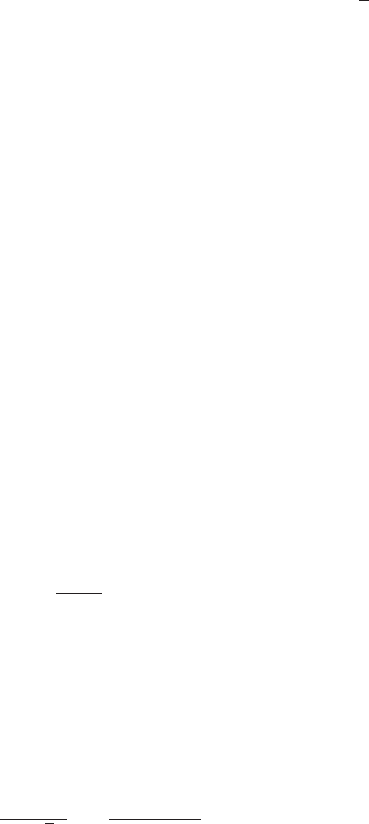
APPENDIX C
✦
Estimation and Inference
1065
Example C.11 Consistent Test About a Mean
A confidence interval for the mean of a normal distribution is ¯x ± t
1−α/2
(s/
√
n) , where ¯x and
s are the usual consistent estimators for μ and σ (see Section D.2.1), n is the sample size,
and t
1−α/2
is the correct critical value from the t distribution with n − 1 degrees of freedom.
For testing H
0
: μ = μ
0
versus H
1
: μ = μ
0
, let the procedure be to reject H
0
if the confidence
interval does not contain μ
0
. Because ¯x is consistent for μ, one can discern if H
0
is false as
n →∞, with probability 1, because ¯x will be arbitrarily close to the true μ. Therefore, this
test is consistent.
As a general rule, a test will be consistent if it is based on a consistent estimator of the
parameter.
C.7.2 TESTS BASED ON CONFIDENCE INTERVALS
There is an obvious link between interval estimation and the sorts of hypothesis tests we have
been discussing here. The confidence interval gives a range of plausible values for the parameter.
Therefore, it stands to reason that if a hypothesized value of the parameter does not fall in this
range of plausible values, then the data are not consistent with the hypothesis, and it should be
rejected. Consider, then, testing
H
0
: θ = θ
0
,
H
1
: θ = θ
0
.
We form a confidence interval based on
ˆ
θ as described earlier:
ˆ
θ − C
1−α/2
[se(
ˆ
θ)] <θ <
ˆ
θ + C
1−α/2
[se(
ˆ
θ)].
H
0
is rejected if θ
0
exceeds the upper limit or is less than the lower limit. Equivalently, H
0
is
rejected if
*
*
*
*
ˆ
θ − θ
0
se(
ˆ
θ)
*
*
*
*
> C
1−α/2
.
In words, the hypothesis is rejected if the estimate is too far from θ
0
, where the distance is measured
in standard error units. The critical value is taken from the t or standard normal distribution,
whichever is appropriate.
Example C.12 Testing a Hypothesis About a Mean with
a Confidence Interval
For the results in Example C.8, test H
0
: μ = 1.98 versus H
1
: μ = 1.98, assuming sampling
from a normal distribution:
t =
*
*
*
*
¯x − 1.98
s/
√
n
*
*
*
*
=
*
*
*
*
1.63 − 1.98
0.102
*
*
*
*
= 3.43.
The 95 percent critical value for t(24) is 2.064. Therefore, reject H
0
. If the critical value for
the standard normal table of 1.96 is used instead, then the same result is obtained.
If the test is one-sided, as in
H
0
: θ ≥ θ
0
,
H
1
: θ<θ
0
,
then the critical region must be adjusted. Thus, for this test, H
0
will be rejected if a point estimate
of θ falls sufficiently below θ
0
. (Tests can usually be set up by departing from the decision criterion,
“What sample results are inconsistent with the hypothesis?”)

1066
PART VI
✦
Appendices
Example C.13 One-Sided Test About a Mean
A sample of 25 from a normal distribution yields ¯x = 1.63 and s = 0.51. Test
H
0
: μ ≤ 1.5,
H
1
: μ>1.5.
Clearly, no observed ¯x less than or equal to 1.5 will lead to rejection of H
0
. Using the borderline
value of 1.5 for μ, we obtain
Prob
√
n(¯x − 1.5)
s
>
5(1.63 − 1.5)
0.51
= Prob(t
24
> 1.27).
This is approximately 0.11. This value is not unlikely by the usual standards. Hence, at a
significant level of 0.11, we would not reject the hypothesis.
C.7.3 SPECIFICATION TESTS
The hypothesis testing procedures just described are known as “classical” testing procedures. In
each case, the null hypothesis tested came in the form of a restriction on the alternative. You
can verify that in each application we examined, the parameter space assumed under the null
hypothesis is a subspace of that described by the alternative. For that reason, the models implied
are said to be “nested.” The null hypothesis is contained within the alternative. This approach
suffices for most of the testing situations encountered in practice, but there are common situations
in which two competing models cannot be viewed in these terms. For example, consider a case
in which there are two completely different, competing theories to explain the same observed
data. Many models for censoring and truncation discussed in Chapter 19 rest upon a fragile
assumption of normality, for example. Testing of this nature requires a different approach from the
classical procedures discussed here. These are discussed at various points throughout the book, for
example, in Chapter 19, where we study the difference between fixed and random effects models.
APPENDIX D
Q
LARGE-SAMPLE DISTRIBUTION
THEORY
D.1 INTRODUCTION
Most of this book is about parameter estimation. In studying that subject, we will usually be
interested in determining how best to use the observed data when choosing among competing
estimators. That, in turn, requires us to examine the sampling behavior of estimators. In a few
cases, such as those presented in Appendix C and the least squares estimator considered in
Chapter 4, we can make broad statements about sampling distributions that will apply regardless
of the size of the sample. But, in most situations, it will only be possible to make approximate
statements about estimators, such as whether they improve as the sample size increases and what
can be said about their sampling distributions in large samples as an approximation to the finite
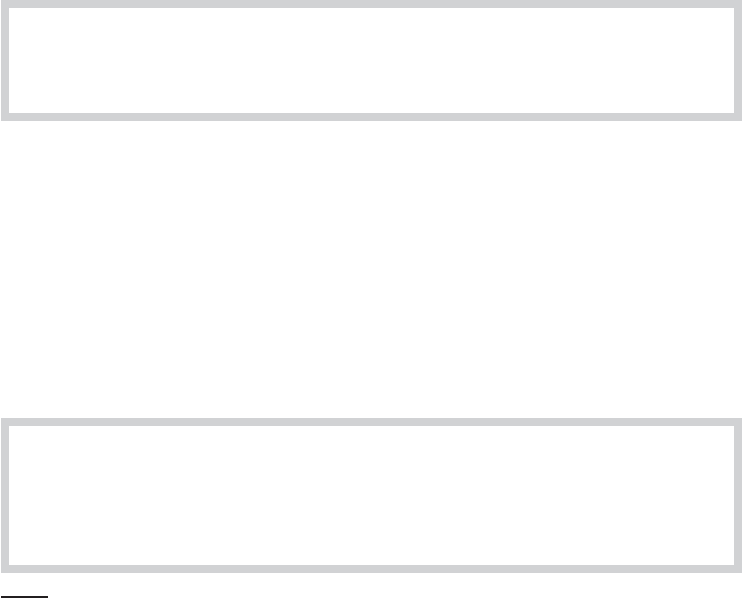
APPENDIX D
✦
Large-Sample Distribution Theory
1067
samples we actually observe. This appendix will collect most of the formal, fundamental theorems
and results needed for this analysis. A few additional results will be developed in the discussion
of time-series analysis later in the book.
D.2 LARGE-SAMPLE DISTRIBUTION THEORY
1
In most cases, whether an estimator is exactly unbiased or what its exact sampling variance is in
samples of a given size will be unknown. But we may be able to obtain approximate results about
the behavior of the distribution of an estimator as the sample becomes large. For example, it is
well known that the distribution of the mean of a sample tends to approximate normality as the
sample size grows, regardless of the distribution of the individual observations. Knowledge about
the limiting behavior of the distribution of an estimator can be used to infer an approximate
distribution for the estimator in a finite sample. To describe how this is done, it is necessary, first,
to present some results on convergence of random variables.
D.2.1 CONVERGENCE IN PROBABILITY
Limiting arguments in this discussion will be with respect to the sample size n. Let x
n
be a sequence
random variable indexed by the sample size.
DEFINITION D.1
Convergence in Probability
The random variable x
n
converges in probability to a constant c if lim
n→∞
Prob(|x
n
−c| >
ε) = 0 for any positive ε.
Convergence in probability implies that the values that the variable may take that are not
close to c become increasingly unlikely as n increases. To consider one example, suppose that the
random variable x
n
takes two values, zero and n, with probabilities 1 −(1/n) and (1/n), respec-
tively. As n increases, the second point will become ever more remote from any constant but, at the
same time, will become increasingly less probable. In this example, x
n
converges in probability
to zero. The crux of this form of convergence is that all the mass of the probability distribution
becomes concentrated at points close to c.Ifx
n
converges in probability to c, then we write
plim x
n
= c. (D-1)
We will make frequent use of a special case of convergence in probability, convergence in mean
square or convergence in quadratic mean.
THEOREM D.1
Convergence in Quadratic Mean
If x
n
has mean μ
n
and variance σ
2
n
such that the ordinary limits of μ
n
and σ
2
n
are c and 0,
respectively, then x
n
converges in mean square to c, and
plim x
n
= c.
1
A comprehensive summary of many results in large-sample theory appears in White (2001). The results
discussed here will apply to samples of independent observations. Time-series cases in which observations
are correlated are analyzed in Chapters 20 through 23.
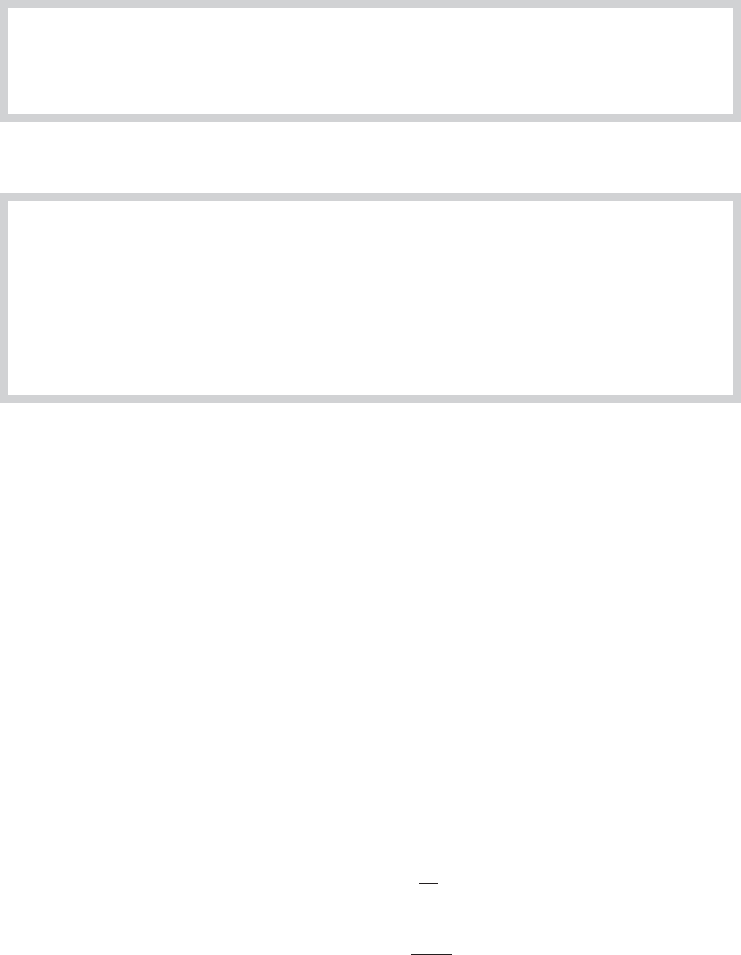
1068
PART VI
✦
Appendices
A proof of Theorem D.1 can be based on another useful theorem.
THEOREM D.2
Chebychev’s Inequality
If x
n
is a random variable and c and ε are constants, then Prob(|x
n
− c|>ε)≤
E[(x
n
− c)
2
]/ε
2
.
To establish the Chebychev inequality, we use another result [see Goldberger (1991, p. 31)].
THEOREM D.3
Markov’s Inequality
If y
n
is a nonnegative random variable and δ is a positive constant, then
Prob[y
n
≥ δ] ≤ E[y
n
]/δ.
Proof: E[y
n
] =Prob[y
n
<δ]E[y
n
| y
n
<δ] +Prob[y
n
≥δ]E[y
n
| y
n
≥ δ]. Because y
n
is non-
negative, both terms must be nonnegative, so E[y
n
] ≥Prob[y
n
≥δ]E[y
n
| y
n
≥δ].
Because E[y
n
| y
n
≥δ] must be greater than or equal to δ,E[y
n
] ≥Prob[y
n
≥δ]δ, which
is the result.
Now, to prove Theorem D.1, let y
n
be (x
n
− c)
2
and δ be ε
2
in Theorem D.3. Then, (x
n
− c)
2
>δ
implies that |x
n
− c| >ε. Finally, we will use a special case of the Chebychev inequality, where
c = μ
n
, so that we have
Prob(|x
n
− μ
n
| >ε)≤ σ
2
n
/ε
2
. (D-2)
Taking the limits of μ
n
and σ
2
n
in (D-2), we see that if
lim
n→∞
E[x
n
] = c, and lim
n→∞
Var[x
n
] = 0, (D-3)
then
plim x
n
= c.
We have shown that convergence in mean square implies convergence in probability. Mean-
square convergence implies that the distribution of x
n
collapses to a spike at plim x
n
, as shown in
Figure D.1.
Example D.1 Mean Square Convergence of the Sample Minimum
in Exponential Sampling
As noted in Example C.4, in sampling of n observations from an exponential distribution, for
the sample minimum x
(1)
,
lim
n→∞
E
x
(1)
= lim
n→∞
1
nθ
= 0
and
lim
n→∞
Var
x
(1)
= lim
n→∞
1
(nθ)
2
= 0.
Therefore,
plim x
(1)
= 0.
Note, in particular, that the variance is divided by n
2
. Thus, this estimator converges very
rapidly to 0.
